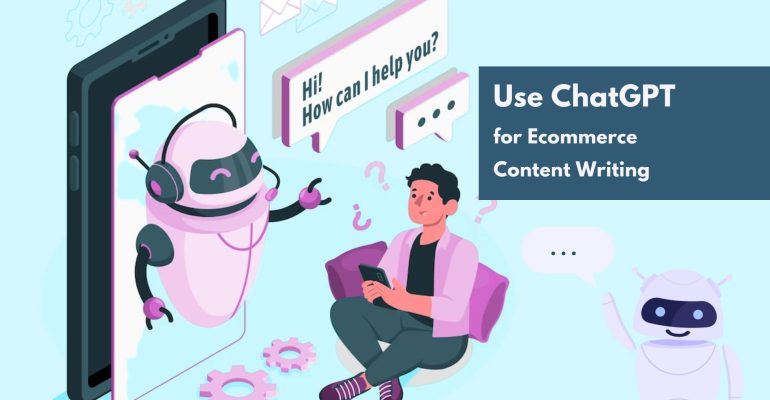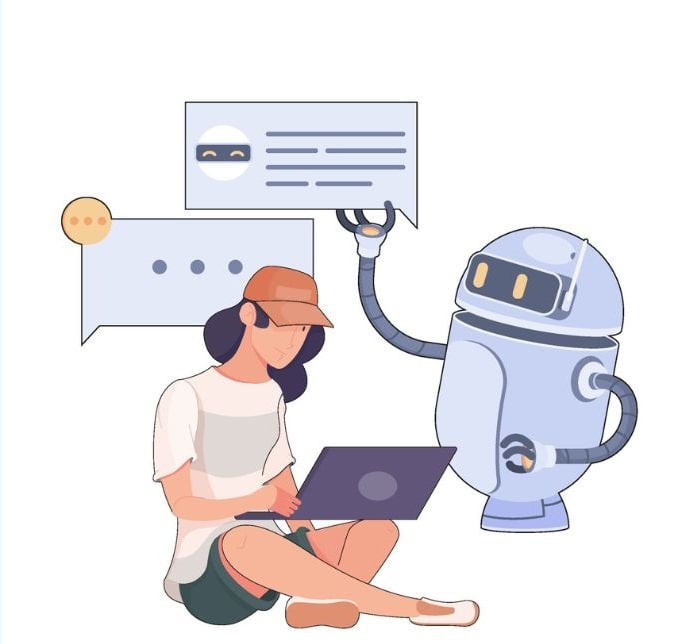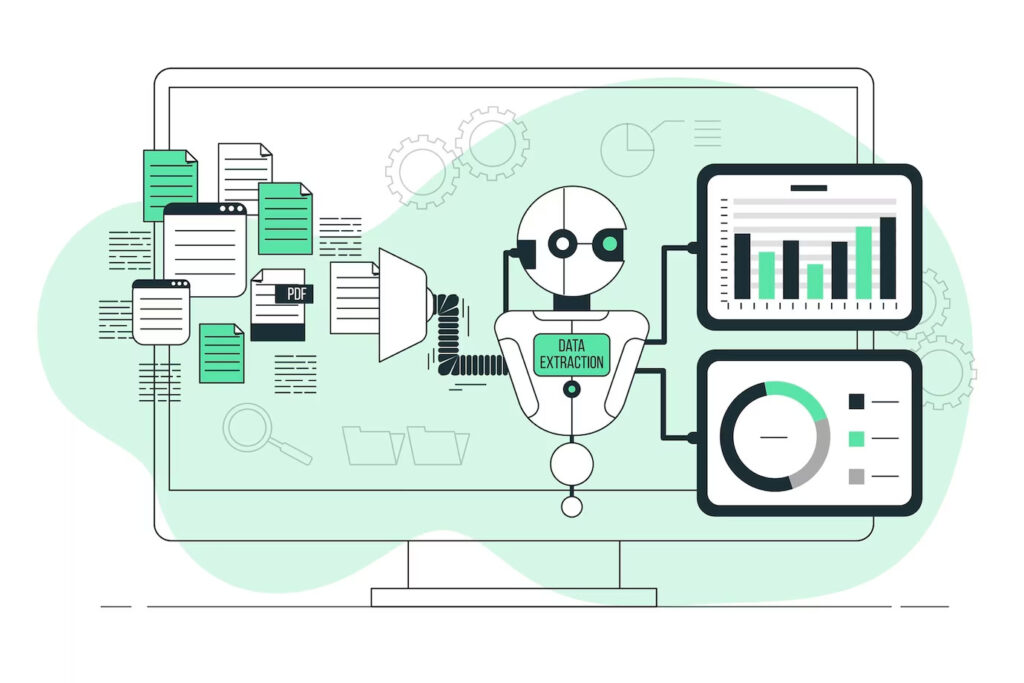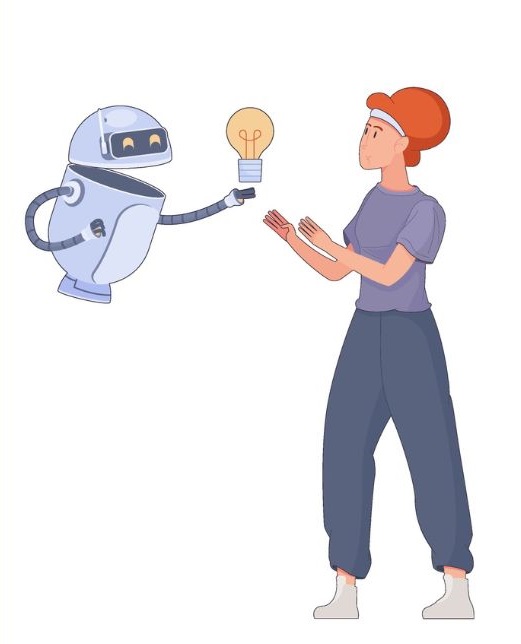How to Use ChatGPT for Ecommerce Content Writing: Practical Tips Based on Personal Experience

How to Use ChatGPT for Ecommerce Content Writing: Practical Tips Based on Personal Experience
Ecommerce businesses are always looking for ways to improve their content marketing efforts performance.
One way to do this is to use ChatGPT or generally AI-generated content. AI-generated content is created by artificial intelligence (AI) tools, such as ChatGPT. ChatGPT is a large language model (LLM) chatbot developed by OpenAI. It is trained on a massive dataset of text and code, and it can generate text, translate languages, write different kinds of creative content, and answer your questions in an informative way.
In this article, I will share some practical tips on how to use ChatGPT for ecommerce content writing. I will also discuss the benefits of using ChatGPT for ecommerce content writing, as well as some of the limitations.
Benefits of Using ChatGPT for Ecommerce Content Writing
There are many benefits to use ChatGPT for ecommerce content writing. However, It is necessary to comply with certain principles and rules when using this tool. If you don’t do this, you won’t be able to get any benefit from it, and you may even see negative effects on your Ecommerce. So, make sure you read the “How to use ChatGPT” section.
Here are a few of the most notable benefits:
- Save Money
- Improve The Content Quality
- Increase Time Efficiency
- Provide Data-Driven Insights
- Content Expansion
- Get More Traffic to Your Website
Save Money

If you use ChatGPT in the correct way, it can help you save money by automating the content writing process. This can be especially helpful for businesses that need to create a lot of content, such as blog posts, product descriptions, and marketing materials. Rephrasing, summarizing, generating new ideas, writing some parts of the content, and many more tasks can be done much faster with the help of AI content creation tools like ChatGPT. Therefore, you can run your content strategy with fewer people.
Improve The Content Quality

Use ChatGPT can help you improve the quality of your content by generating high-quality, engaging text that is tailored to your target audience. This can help you attract more visitors to your website and increase your sales. It can significantly enhance content quality in several ways:
- Rephrasing: Sometimes, the content might need a fresh perspective. ChatGPT can rephrase sentences or paragraphs to improve clarity and readability while retaining the original meaning. It can do it based on your desired tone of voice and word choice.
- Consistency: ChatGPT can be trained to mimic your brand’s tone of voice, ensuring that all your content, from product descriptions to blog posts, aligns with your brand’s personality.
- Grammar and Spelling: ChatGPT’s grammar-checking capabilities help eliminate errors, ensuring your content appears polished and professional.
- Coherence: Well-structured content that flows logically is more engaging and easier to understand. ChatGPT can help you organize your ideas and ensure that your content is coherent and follows a logical structure, making it more reader-friendly.
- Multilingual Content: ChatGPT’s multilingual capabilities enable you to create high-quality content for diverse audiences without the need for extensive translation efforts.
Increase Time Efficiency
ChatGPT can produce content at a much faster rate than human writers. This time efficiency can be particularly beneficial when you need to create a large volume of content quickly, such as during holiday sales or promotions. You can see the amazing speed of this tool if you use ChatGPT for summarizing, creating the introduction, and pointing out the key points of the text.
Provide Data-Driven Insights
For an Ecommerce business, data is a crucial source for decision-making. You can use ChatGPT to see how your content is performing by providing your business intelligence and simply asking questions without being a data analyst expert. ChatGPT can analyze data to provide insights into content performance. By examining metrics like engagement rates and click-through rates, it can help you fine-tune your content strategy for better results.

Content Expansion
If you have an existing piece of content that you’d like to repurpose or expand upon, ChatGPT can generate additional paragraphs or sections to provide more comprehensive information to your audience. Because it has been trained with a large pile of data, in many cases it can add some new perspectives to your content and idea.

BE CAREFUL! Not all the information it gives you is correct. Make sure you read the “How to use ChatGPT” section to avoid any traps.
Get More Traffic to Your Website
ChatGPT can help you get more traffic to your website by generating SEO-friendly content that is optimized for search engines if used correctly. This can help your website rank higher in search results, leading to more visitors.
How to Use ChatGPT for Ecommerce Content Writing
As I mentioned before, there are certain serious limitations and pitfalls in using ChatGPT for your Ecommerce business. Without paying attention to them, you might hurt your business instead of benefiting from this magnificent tool. To use ChatGPT for ecommerce content writing, you can follow these steps for any kind of content creation for your Ecommerce:
Step 1. Feed ChatGPT with information
The first step to use ChatGPT for blog writing or creating social or website content is to give comprehensive information about your business. Clarify your target audience, your products and services, and your brand tone of voice. Try to be exact with detailed information. If you have a brand book, brand statement, or any type of content marketing-related document, provide it to the ChatGPT. Ask it to read it and save your tone of voice and your vocabulary use.
Remember, it is just a tool, it does not know you or your business. So if you want to get realistic near-human results, you need to explain your business to it.
Pro tip: ChatGPT can only use the history of your current chat. For example, if you introduce your company in a chat, you can not ask anything about it in a new chat.
Step 2. Do the keyword research yourself
ChatGPT can help you generate content, but it is not good at keyword research. Do your own keyword research to find the right keywords to target in your content. The problem is if you ask for example “What keywords should I include in my blog article with the X subject”, it may give you some keywords that look good, but don’t be fooled, it will mislead you.
Step 3. Ask ChatGPT to write the content
Once you have done your keyword research, you can ask ChatGPT to write the content you need. Be sure to provide ChatGPT with the specific keywords you want to target and any other information relevant to the content. You have to make it clear what type of content you are looking for. Is it a blog article, a product description, a social media post, or a website content for a landing page? This is where you need to learn by experience how to write a good content prompt.
Step 4. Refine the content
Once ChatGPT has written the content, you will need to refine it. In this step, you ask ChatGPT to make some adjustments to the content.
This may involve making changes to the wording, adding or removing information, or correcting any errors.
Rephrase […] with the following information: […]
Add […] to the […] headline you wrote.
Rewrite […] with the following concept […]
For […] H2 headline use more simple words
…
These are just some examples of ChatGPT blog prompts that help you refine the content.
Step 5. Edit and revise
Finally, It is your turn to proofread the text and add your final touches. No matter how good your chatgpt writing prompts are, the final text still may have some errors or misinformation.
Moreover, if you use ChatGPT every day like me, you will see there are some patterns that it tends to repeat. For example, for blog articles, it really likes to use the word “delve”. Just imagine if a human can find a repetitive pattern in the texts, How easy it is for Google to find out that this is an AI-generated text?
You can use other AI tools like “Wordtune” to rephrase, but I urge you to take this seriously, and revise at least some part of the text “yourself”.
ChatGPT Content Prompts
ChatGPT is smart and a good writer, however, it is not a magician! It can not read your mind. It has a “zero” background about what you need right now. When you ask ChatGPT to write content, you need to provide enough information with clear and concise prompts.
When we (as humans) write, we have many assumptions and defaults in our mind, you need to clarify each one of them for the AI to get the results you want. Otherwise, it will use its defaults and who knows what are they. Here I tried to make a list for you to help you write better prompts:
- SEO friendly: For an Ecommerce website, every word is an opportunity for SEO optimization. In addition to keyword research, it is always good to tell ChatGPT to write based on SEO best practices, or SEO friendly.
- Tone of voice: Formal or informal, optimistic or pessimistic, friendly or professional, humorous or serious, etc.
- Target audience: The more you define the target audience, the final result will be closer to what you want.
- Main keyword: If you are trying to write a content prompt for a blog article, do not forget to mention the main keyword.
- Length of the article: This AI chat, tends to write short. Especially if you want to use ChatGPT for a blog article, ask it to write 2000 words. It may not always be exactly the same number of words, but it will still give you more explanation.
- Topics: It is always good to clarify the H2 and H3 headlines, which areas you want to focus on, and what concepts you want to include in which part of the article.
- The general structure of the content: I always provide the main structure to ChatGPT and ask it to write based on a specific title, H2, and H3 headlines.
This will help ChatGPT understand what you are looking for and generate the best possible content. Here we will provide some examples of different types of ChatGPT content prompts:
ChatGPT blog prompts examples
Here we will explain to you how to create a chatgpt blog prompt with some examples. You can see very simple ones and how to evolve them into a professional blog prompt.
- 1- Write me an article about […]
- 2- Write me a blog article about […] considering SEO best practices.
- 3- Write me a blog article about […] considering SEO best practices. The main keyword for this article is […].
- 4- Write me a blog article about [… ] with at least 2500 words, considering SEO best practices with the following structure:
Title: […]
+ [Headline1]
+ [Headline2]
– [Headline2.1]
+ [Headline3]
– [Headline3.1]
– [Headline3.2]
+ [Headline4]
…
The H3s start with +, H2s start with -, and …
Us the […] tone of voice. The target audience for this article is […].
- 5- Pretend you are a […] expert. with [5] years of experience in [SEO and content creation]. Therefore you are a specialist in [link building], [content creation], [keyword research], [SEO best practices], [content syndication], and many other [SEO-related] skills. Write me a blog article about [… ] with at least 2500 words, considering SEO best practices with the following structure:
Title: […]
+ [Headline1]
+ [Headline2]
– [Headline2.1]
+ [Headline3]
– [Headline3.1]
– [Headline3.2]
+ [Headline4]
…
The H3s start with +, H2s start with -, and …
Us the […] tone of voice. The target audience for this article is […].
Remember before this, you need to do your research and keyword research, publishing a lot of articles with false information and wrong keywords will not going to help your business.
ChatGPT prompts for social media examples
For social media prompts, there are some points that you need to pay extra attention to. You need to make the following information in the prompt to get the best results:
- Which social media
- Target audience definition
- Lengths or characters of the text
- The goal of the post
- The definition of the post
- The information you want to be mentioned in the post
- The tone of voice
- Provide a sample (optional but strongly recommended)
Pro tip: Use the same chat that you previously entered the information of your business to get more accurate results. You can ask the ChatGPT to respond to you with the information it has from your current chat.
These are just some simple examples of ChatGPT prompts for social media:
1- Compose a concise but attention-grabbing tweet announcing our upcoming sale event. Mention the event date, discount percentage, and a compelling reason for our followers to participate.
2- Craft an Instagram caption for our new fashion collection, ‘Spring Elegance.’ Capture the essence of the collection’s style and colors in a captivating way. Keep it under 150 characters.
3- Write an engaging Facebook Post for a Tech Product with the following information:
Social Media Platform: Facebook
Target Audience Definition: Our tech-savvy audience, aged 18-35, is interested in the latest gadgets and technology trends.
Text Length: Around 180 characters.
Post Goal: Increase excitement and awareness about our new product, [Product Name].
Post Definition: Create a concise and engaging Facebook post that introduces our latest tech marvel, [Product Name], highlighting its cutting-edge features, such as [Feature 1] and [Feature 2].
Information to Include: Mention the product name, two key features, and a call to action encouraging users to click for more details.
The tone of Voice: Informal, enthusiastic, and tech-savvy.
Use this post as an example to follow and write with a similar tone of voice and structure: […]
But here is a heartbreaking reminder: If you want to use chatgpt to get well-tailored content for your ecommerce business, DO NOT copy and paste the prompts. Read the provided steps and tips in this article. See different examples, get the idea then write your prompts, test and refine them until you get the desired results.
ChatGPT Use Cases for Ecommerce
More and more Ecommerce businesses use chatgpt to enhance their performance and value proposition with lower costs. Use ChatGPT and generally AI chatbots is one of the biggest trends in Ecommerce. It offers a wide array of use cases that can streamline operations, enhance customer experiences, and boost sales. In this section, we’ll explore some key use cases where ChatGPT can make a significant impact on your ecommerce business.
Writing product descriptions
In ecommerce, compelling product descriptions are crucial for capturing the attention of potential buyers. ChatGPT excels at crafting unique and engaging product descriptions by learning from existing data and adapting to your brand’s voice. It can generate descriptions that highlight a product’s key features, benefits, and value proposition, making it more enticing to customers.
Creating blog posts
Educational content is a powerful tool for attracting and retaining customers. ChatGPT can assist in generating informative blog posts that not only showcase your expertise in your niche but also provide valuable information to your audience. It can help you stay consistent with your posting schedule and cover a wide range of topics relevant to your industry.
Writing marketing copy
Effective marketing copy is the linchpin of successful online marketing campaigns. ChatGPT can help you create persuasive marketing copy that drives conversions. By generating catchy headlines, persuasive body text, and clear calls to action, it motivates your customers to take the desired action, whether it’s making a purchase, signing up for a newsletter, or downloading an ebook.
Generating social media posts
Maintaining an active and engaging presence on social media is vital for ecommerce businesses. ChatGPT can assist in generating social media posts that resonate with your audience. Whether you need posts for Facebook, Instagram, Twitter, or other platforms, it can craft content that attracts attention and encourages interaction, helping you build a loyal online community.
Providing customer support
Customer service is a cornerstone of ecommerce success, and ChatGPT can play a pivotal role in streamlining this aspect. It can answer common customer questions, provide feedback, and resolve issues by using natural language understanding and generating human-like responses. To use ChatGPT for this purpose, you can integrate it with your website, chatbot, or social media platform, and let it handle common customer inquiries, such as “How can I track my order?” or “What is your return policy?” and it will provide accurate and friendly answers.
Creating an Informative FAQ Section
The Frequently Asked Question (FAQ) section is a valuable addition to your website, the landing page of a newly launched product, or your blog article. It not only captures users’ attention but also efficiently communicates essential information, ultimately boosting conversion rates. If you try to answer the right questions based on Google questions, it can help your SEO rankings too.
Enter ChatGPT can craft a comprehensive FAQ section. All it requires is the appropriate context regarding your product or company. You can even instruct it to include specific questions you think are crucial or make revisions to the generated text until you achieve the desired result that meets your satisfaction.
Limitations of Using ChatGPT for Ecommerce Content Writing
While it is very interesting for an Ecommerce business to use ChatGPT, it is important to be aware of its limitations and pitfalls. Here are a few of the most notable limitations:
- ChatGPT is not perfect: ChatGPT is still under development, and it can sometimes generate content that is inaccurate, irrelevant, or even offensive. It is important to carefully edit and proofread any content that is generated by ChatGPT.
- ChatGPT can be repetitive: ChatGPT is trained on a massive dataset of text, and it can sometimes generate content that is repetitive or unoriginal. It is important to use ChatGPT in conjunction with other tools, such as keyword research and human editing, to ensure that your content is unique and engaging.
- ChatGPT can be biased: ChatGPT is trained on a dataset of text that is created by humans, and it can sometimes reflect the biases of its creators. It is important to be aware of these biases and to take steps to mitigate them, such as providing ChatGPT with a diverse set of prompts and feedback.
- No accurate source: If you try to find out where is the source of a ChatGPT’s answer, it may give a link that it does not even exist. So, if you are not familiar with a topic, before use ChatGPT make sure you have studied the subject enough.
- Never says NO: Especially if you use ChatGPT for content creation, it is almost impossible to hear no from it. No matter how incomplete the information is, it can always create a good-looking text. But sometimes, when you read it, you will understand there is no useful information in that part. And this is NOT good for the SEO of your website.
Conclusion
ChatGPT is a powerful tool that can be used to improve the quality and efficiency of your ecommerce content writing. However, it is important to be aware of its limitations and to use chatGPT in conjunction with other tools and techniques. By following the tips in this article, you can use ChatGPT to create high-quality, engaging content that will help you attract more visitors to your website and increase your sales.
Here are some additional tips to use ChatGPT for ecommerce content writing:
- Start with a clear understanding of your target audience: What are their needs and interests? What kind of content will they find most engaging?
- Use clear and concise prompts: The more specific you can be, the better ChatGPT will be able to understand what you are looking for.
- Provide feedback: ChatGPT will learn from the feedback you provide, so be sure to give it positive and negative feedback so it can improve its performance.
- Don’t be afraid to experiment: ChatGPT is a powerful tool, but it’s still under development. Experiment with different prompts and settings to see what works best for you.


